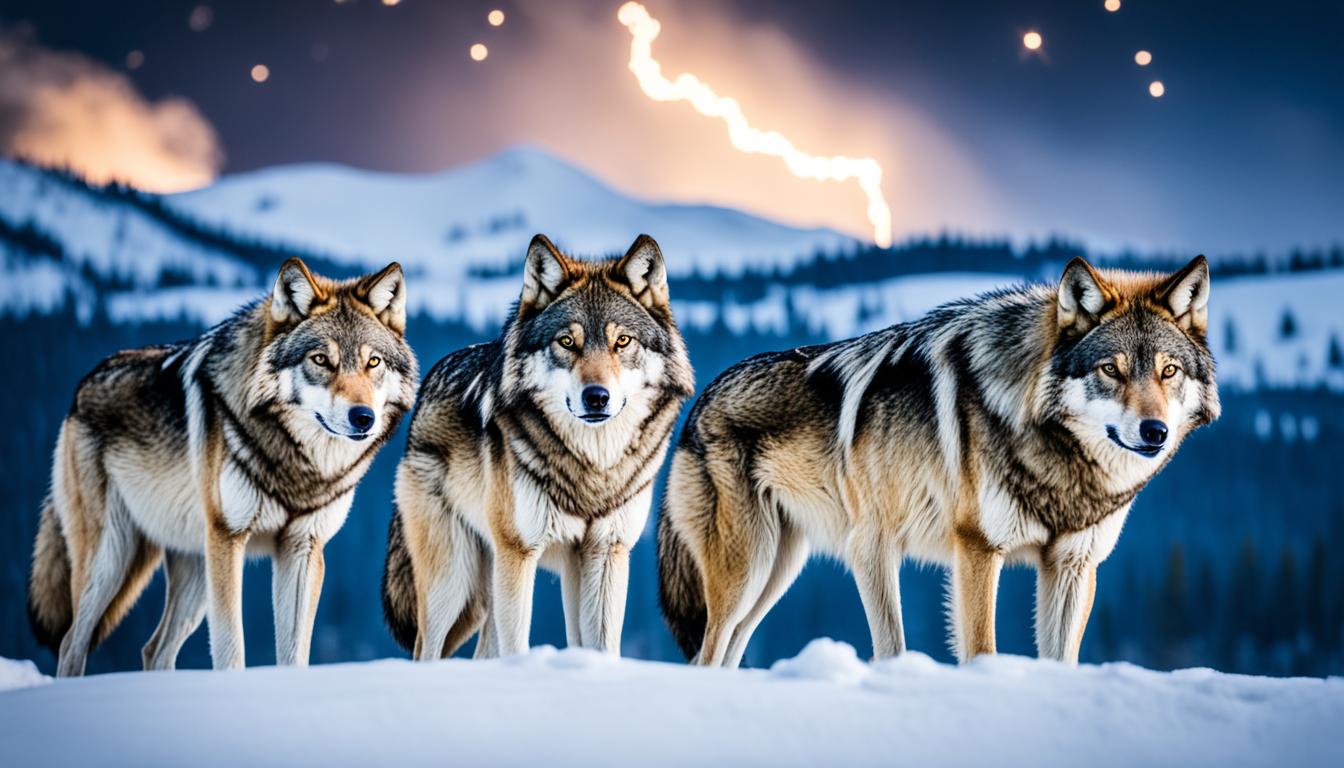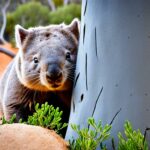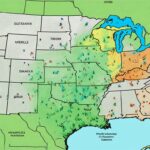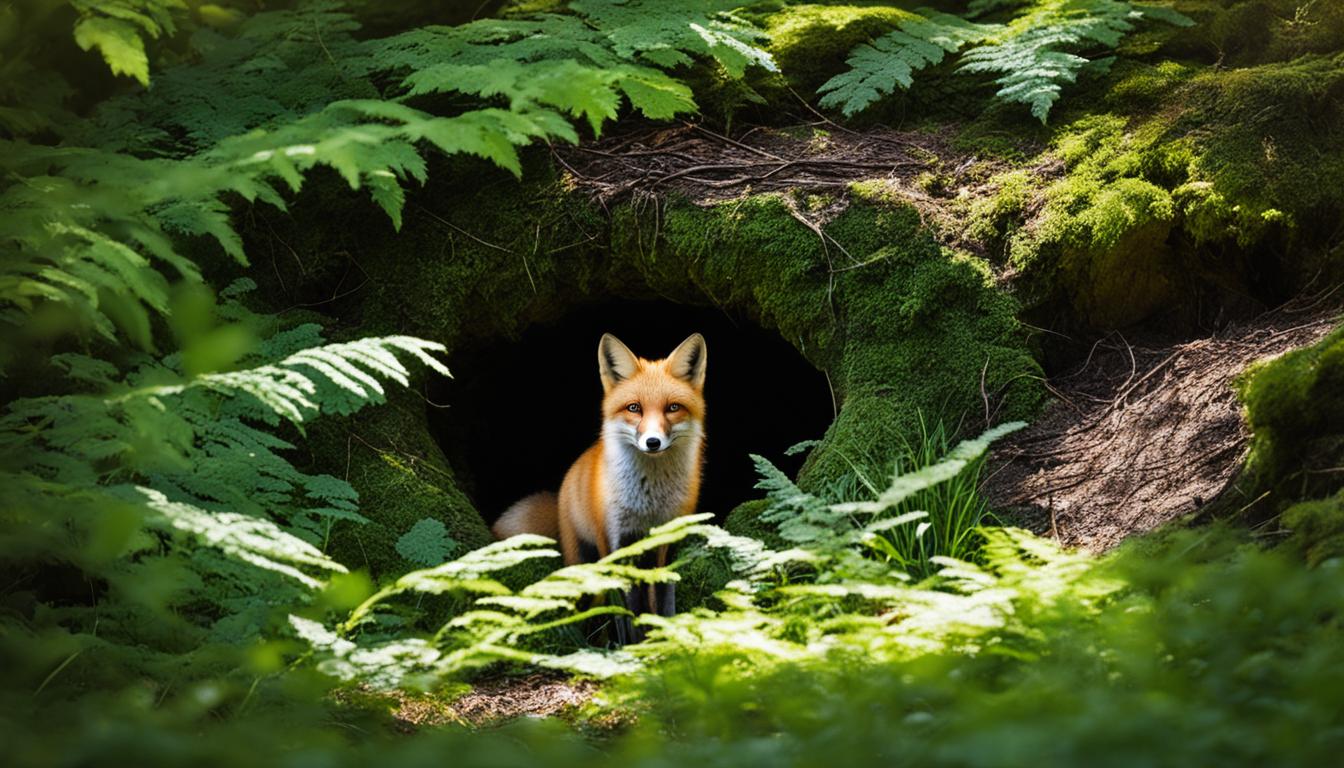Ever thought about seeing a top predator return to its home in the wild? Yellowstone is key in wolf rebirth, big for the whole area. Wolves were nearly gone in the past. Now, they’re back, thanks to efforts between 1995 and 1997.
Today, they’re vital in keeping the area’s balance. Walking through the park, you might see a wolf. This shows how strong they are for nature. Getting wolves back isn’t just a win for them, it’s also a win for saving species.
Interested in how wolves are changing Yellowstone? Keep reading to learn about their journey and what it means for the nature there.
Introduction to Wolves in Yellowstone
The Yellowstone wolves open a window into their world. They live in well-organized wolf packs. This social structure adapts to food availability. A usual pack has around 11.8 wolves. The members include various roles, with alpha wolves leading.
This pack life isn’t just about roles. Wolves use howling and marking to claim and protect lands. This shows their social intelligence. By watching them hunt elk, we learn how they help other animals and keep the balance in nature.
Different coat colors in Yellowstone’s wolves tell us a lot. These color differences hint at how well they survive and have babies. It shows how genes and the environment mix to shape the wolves we see.
| Feature | Details |
|---|---|
| Average Pack Size | 11.8 Individuals |
| Diet | Primarily Elk (especially in winter) |
| Territorial Behavior | Howling and Scent-Marking |
| Genetic Studies | Coat Color Variations |
Studying wolf behavior and their interactions with prey shows us how they fit in Yellowstone. Every way they live teaches us about their special abilities to survive and thrive.
History of Wolf Reintroduction in Yellowstone National Park
The reintroduction of wolves in Yellowstone National Park was a big success. It was started to help the endangered northern Rocky Mountain wolves. They were in trouble because people killed them off and destroyed their homes.
Yellowstone was chosen as a special place to bring the wolves back. This decision was made in a study. It said Yellowstone was important for the wolves and the whole environment. So, wolves from Canada were taken there from 1995 to 1997. This effort was about more than just adding wolves. It was to help the whole park’s nature be healthy again.
The Early Efforts and Challenges
The first steps to bring wolves back to Yellowstone were tough. A lot of planning and checking were needed. People were worried about what bringing back the wolves might mean for them and for activities like farming.
But, many hard-working people wanted to make this happen. They had help from different groups who also cared about keeping wildlife safe. Laws and policies from the 1960s and 1970s that wanted to save nature also played a big part.
Success of the Reintroduction Program
After a while, the efforts to bring back the wolves were clearly working. The new wolf families found places to live and started to grow in number. This showed that the plan to bring them back was working well.
Also, bringing back the wolves had a big effect on nature. It helped in ways that scientists are still learning about. But, it’s clear that adding the wolves again made Yellowstone’s natural systems stronger. And it shows that when people work together, they can help save animals that are at risk.
| Phase | Key Actions | Challenges | Outcome |
|---|---|---|---|
| Initial Research and Planning | Develop Environmental Impact Statement | Public opinion, habitat analysis | Established baseline for reintroduction |
| Relocation (1995-1997) | Transport wolves from Canada | Logistical complexities, habitat adjustment | Successful reintroduction of wolves |
| Post-Reintroduction Monitoring | Track population and ecological impact | Population stability, interspecies dynamics | Thriving wolf population, restored ecological balance |
Yellowstone Wolf Population: Current Data
By January 2024, Yellowstone wolf population statistics showed about 124 wolves living in the park. They belong to ten known packs. This shows how strong and active these vital predators are in the area.
Annual Population Statistics
Between 2009 and 2024, the wolf numbers in Yellowstone have stayed somewhat the same. They’ve been between 83 and 123 wolves. This shows that many things, both natural and helped by people, keep wolf numbers steady each year.
| Year | Wolf Population | Pack Numbers |
|---|---|---|
| 2009 | 83 | 8 |
| 2014 | 104 | 9 |
| 2019 | 97 | 10 |
| 2024 | 124 | 10 |
Fluctuations in Wolf Numbers
Wolf numbers change for many reasons, like diseases and fights over territory. These changes are watched closely. They help us learn how wolves and their environment connect. This knowledge is key for wolves to keep living here for a long time.
Now, we can follow wolves’ movements and see how they interact, thanks to telemetric tools. This means we get really important data. This information helps protect and take care of the wolves in Yellowstone. It’s crucial for them and the whole ecosystem.
The Habitat of Yellowstone Wolves
In Yellowstone Park, wolves live in a variety of places. They are most active at dawn and dusk. These animals can live in areas from 185 to 310 square miles. Where they live depends on how large their pack is, what they can hunt, and the time of year.
Preferred Locations and Territories
The large spaces in Yellowstone are perfect for wolf groups. Each pack picks its area based on where they can find food and live safely. They usually choose high ground and valleys. This choice makes it easier for them to find food and stay safe.
Impact of Ecosystem on Habitat
The health of Yellowstone’s land affects where wolves live. Studies show that the way wolves act and hunt changes how many elk are around. This, then, affects the plants and other animals. It shows how important wolves are in making sure everything in their home is in balance.
| Factor | Influence on Habitat |
|---|---|
| Prey Availability | Determines pack success and sustainability |
| Territorial Behavior | Defines the boundaries and interactions between packs |
| Ecological Influence | Ensures ecosystem balance through predator-prey dynamics |
| Habitat Utilization | Adapting to seasonal changes and resource availability |
Are there any wolves in Yellowstone National Park?
Yellowstone National Park has worked hard to bring back wolves successfully. This makes seeing a wolf in the park very exciting. A great spot for wolf watching in Yellowstone is the Northern Range. It’s well-known worldwide for its excellent chances to see wolves. You’ll also get to enjoy a variety of other wildlife there.
Many things help wolves and their prey thrive in the park. These include where food moves, the time of year animals act, and what places they like. Keeping these natural aspects healthy is crucial. It has helped make Yellowstone a top place for seeing amazing wildlife like wolves.
Whether you love nature or it’s your first time, seeing wolves in Yellowstone is special. It gives a unique look into how nature works. This is an experience that will leave you in awe of the world around us.
Tracking and Monitoring Wolves in Yellowstone
Keeping track of wolf numbers in Yellowstone is vital for managing them and studying wildlife. The use of high-tech tools helps gather lots of important info. This helps us learn more about these top predators.
Methods Used by Researchers
Scientists keep an eye on wolves using a range of ways. These include watching them directly, checking their droppings, and fitting them with GPS and radio collars. All these methods give us crucial details about how wolves move, hunt, and interact.
Fitting some wolves with tracking collars lets researchers follow them across large areas for longer times. This way, we can see how they live in the wild.
![]()
Importance of GPS and Radio Collars
GPS collars are key in managing wolf populations. They send location data, helping create maps of wolf territories and studying their effects on the area’s plants and animals. This tracking technology is not only useful for studying single wolves but also helps us understand bigger ecological processes.
GPS collars have even helped keep the wolf population steady. By using information from these collars, researchers and park staff can make smart choices. This supports the wolves and the health of the whole ecosystem.
| Method | Purpose |
|---|---|
| Direct Observation | Monitor and record real-time behavior and social interactions. |
| Scat Analysis | Assess diet composition and health status. |
| GPS Collars | Track movements and establish territory maps for ecological studies. |
Observing Wolves: Best Spots and Times
If you’re aiming to witness the majestic sight of wolves in Yellowstone, the Northern Range is your go-to destination. This area is known for letting you experience these incredible creatures in their natural habitat.
For the best experience, consider visiting during dawn or dusk. These times are perfect for seeing wolves because they are usually more active then.
Top Locations for Wolf Watching
The Northern Range is famous for top Yellowstone wolf watching. Places like Lamar Valley and Hayden Valley often show wolves. Blacktail Plateau offers spots to see these incredible predators. It’s important to be patient and to have good binoculars.
Tips for Successful Sightings
For the best chance at seeing wolves, follow these tips:
- Arrive early in the morning or late in the evening for the best moments.
- Bring binoculars or a spotting scope for good views without bothering the animals.
- Get advice from park rangers. They know a lot about Northern Range wolves.
- Keep a safe distance to protect yourself and the animals.
- Consider going on a Yellowstone wildlife tour to improve your chances.
Following these steps and knowing about wolf behavior will make your Yellowstone trip unforgettable. It will also help you see nature’s beauty up close.
The Social Structure of Wolf Packs in Yellowstone
The way wolf packs work together and who’s in charge is quite interesting. There’s a clear leader, usually an alpha wolf, directing the rest of the pack. This includes choosing how they hunt, protecting their land, and deciding what’s best for everyone. Watching how they interact gives us a peek into how they survive so well in Yellowstone.
Pack Dynamics and Hierarchy
Inside a wolf pack, everyone knows their place thanks to the alpha wolves. Alpha wolves lead and set the rules through actions like howling and marking their scent. These actions help keep the pack united. Having a leader is key, especially when they work together on hunts.
Roles of Alpha and Subordinate Wolves
Every wolf in a pack plays a critical role. Alpha wolves do more than just lead; they keep the pack’s home safe, too. The others help out with hunting, raising pups, and supporting the alphas in fights. These jobs show us how each wolf is important for the pack’s success.
Experts continue to learn from Yellowstone’s wolf packs. They study how wolves live and work together. By looking at how alphas and the rest of the pack interact, they get insights into the whole ecosystem. This work highlights the vital part wolves play in keeping Yellowstone balanced.










